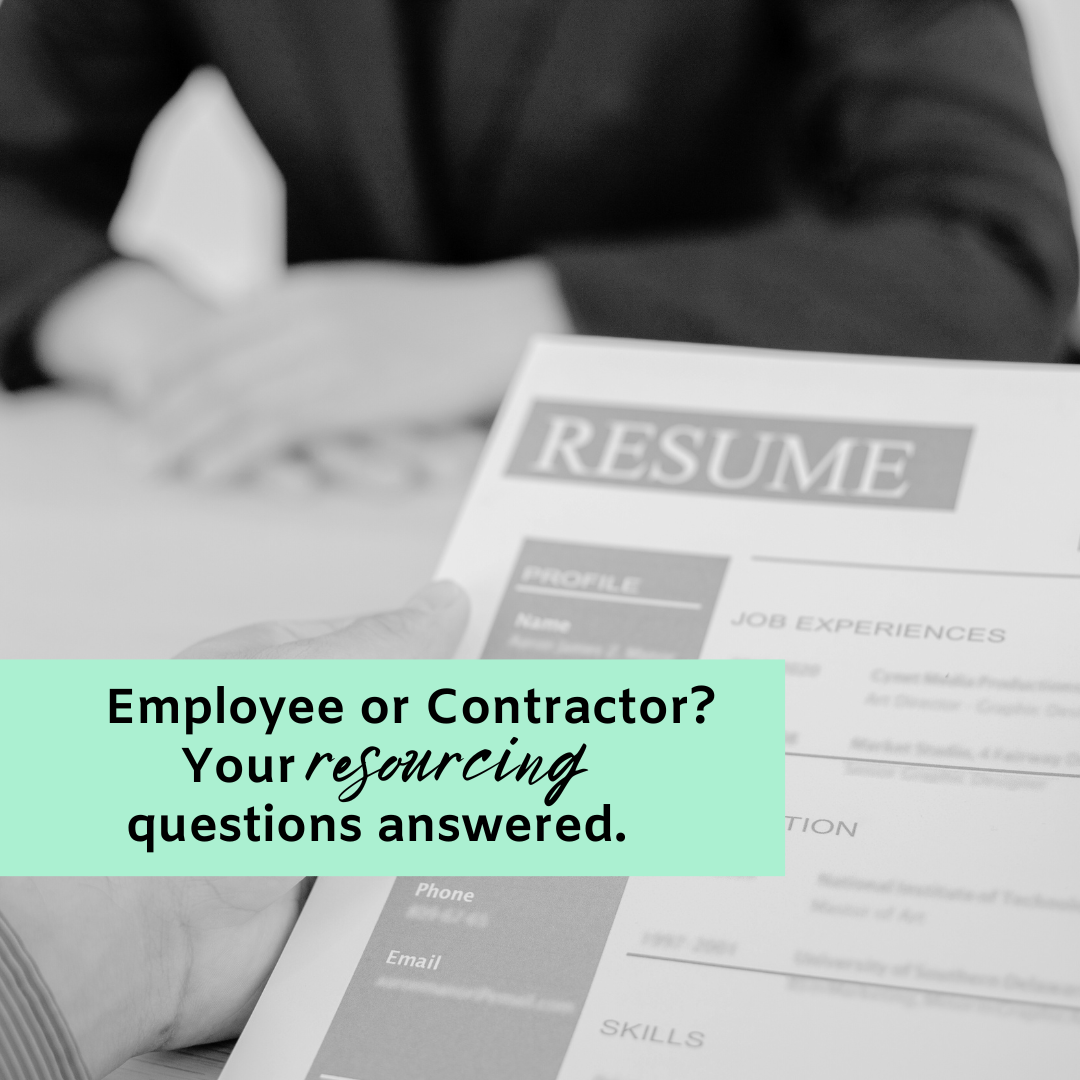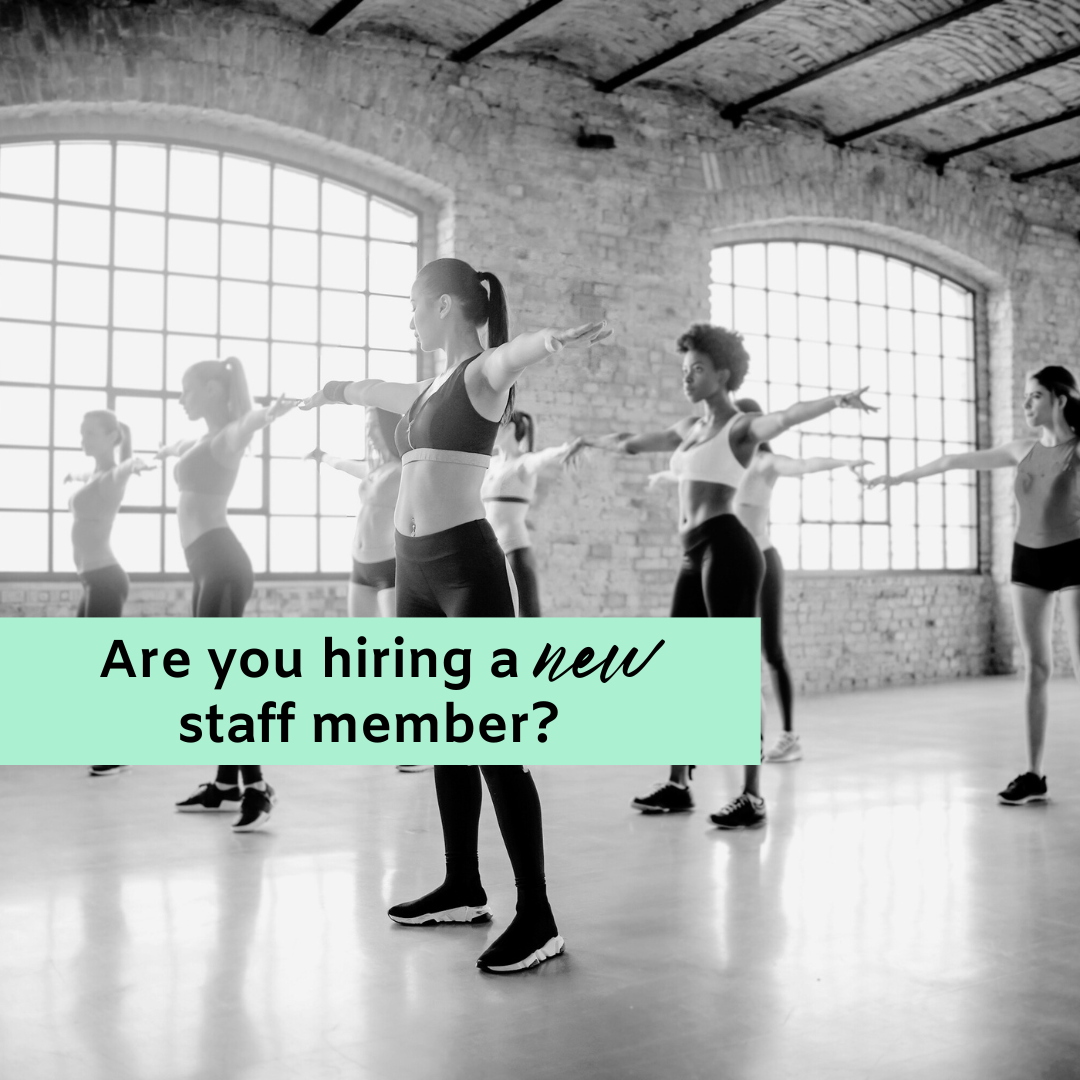There are two common questions I am getting asked at the moment and they are both about how to best resource a business with people.
The first question is what are the pros and cons of engaging someone to complete work for your business as an independent contractor versus an employee.
The second question is what is the difference between hiring an employee on a casual basis, part-time basis or full-time basis.
There are some key differences of rights and obligations that you need to know before you hire someone, so let’s take a closer look at both of these great questions.
What is an independent contractor?
Independent contractors are also called contractors or subcontractors. They run their own business, often use their own processes, tools and methods to complete their work that they sell to another sole trader or business.
They aren’t employed by that person or business, but rather usually have their own business. Independent contractors usually negotiate their own fees and working arrangements, including;
- how work is performed – there is a high level of control over the work they perform, including their hours, work location and how they do the work.
- financial responsibility and risk – they carry the risk for financial outcome on each task or job, are personally responsible and liable for poor work or any injury sustained while performing the task. Generally have their own insurance policy.
- tools and equipment – they use their own tools and equipment. However alternative arrangements may be made within the contract of services.
- delegate or subcontract work – they can delegate or subcontract the services to be performed to another person or business.
- Hours of work – when setting out the terms of the contract, agreement can be made between both parties regarding what hours will be worked to complete the specific task. This can include the days and times of the week when they will be performed.
- expectation of continuation of work – they are usually engaged for a specific task or period of time and this is agreed to by both parties when setting out the terms of the contract.
- Fees and entitlements – they usually negotiate payment as part of their contract for the services and set an hourly rate or payment for a set task. There is no inclusion of leave entitlements, such as annual leave or sick leave. Individuals are responsible for paying their tax and GST (if applicable) and generally pay their own superannuation.
- payment of hours – they will usually submit an invoice when they need to be paid. They can be paid on a regular basis, at set project milestones or at the end of the contract or project.
- managing performance – where an error or underperformance has occurred the employer will provide a notice to remedy or complete services. If the remedy is not sufficient or is within the required time then the contract can be terminated.
- unlimited work – can work for more than one client at a time without it being a conflict of interest or needing to make a declaration.
Some key things to be aware of are:
- A contract can be verbal, in writing or a mix of both. Not all arrangements will necessarily be present in a contractor agreement. It can often be difficult to determine the difference between an independent contractor and employee. For example, just because you have to have an ABN or issue invoices doesn’t automatically make you a contractor.
- It is important to be clear on what is agreed to at or before the start of the working relationship.
- The type of work that is performed will not automatically determine if the working relationship should be as an independent contractor or as an employee. A person may perform the same type of work as an employee of a business but may still be an independent contractor. This means that whether someone is an employee or an independent contractor will depend on the individual circumstances
What is an employee?
An employee is a person who performs work for someone else’s business. The employee controls how, where and when they do their work. In exchange employees get specific benefits such as leave entitlements and wages are paid including taxes and superannuation on behalf of the employee.
The employer usually determines the rate of pay and working arrangements, including;
- how work is performed – they perform the work under the direction and control of their employer. Work is controlled by the employer including hours, work location and how work is done.
- financial responsibility and risk – they have no financial risk (as this is the responsibility of their employer). Generally the employer holds the necessary insurance policies and is both responsible and liable for poor work or any injury sustained while performing the task.
- tools and equipment – tools and equipment are generally provided by the employer. However alternative arrangements may be made within the contract of employment and a tool and equipment allowance is paid.
- delegate or subcontract work – they are required to do the work themselves. For example, they can’t ask someone else to go to their workplace and do their work for them.
- Hours of work – they are required to work standard or set hours (unless they’re a casual employee, in which case their hours may vary from week to week). When setting out the terms of the contract of employment, an agreement can be made between both parties, what hours will be worked. This can include the days and times of the week when they will be performed and can be re-negotiated at any time ensuring it is in writing.
- expectation of continuation of work – they are usually employed on a permanent basis and have an ongoing expectation of work (unless otherwise outlined in the contract of employment or employed on a casual basis). This is agreed to by both parties when setting out the terms of the contract.
- Fees and entitlements – the employer usually determines the rate of pay taking into consideration any minimum wages set out by Fair Work Australia or a relevant industry award. There is inclusion of a variety of paid and unpaid leave entitlements, such as annual leave, sick leave or paternity leave. Employers are responsible for paying tax and superannuation.
- payment of hours – they will usually receive payment in the next regular pay run. An employee might be required to submit a timesheet to confirm hours worked, for which clients, if any leave was taken and any additional hours worked. This will be outlined by the employer and can be weekly, fortnightly or monthly.
- managing performance – where an error, underperformance or misconduct has occurred the employer and employee will engage in informal and formal performance management discussions to try and resolve the issue. If after following a robust process the employee has not resolved the issue their employment might be terminated.
- unlimited work – the employer can determine if an employee can work for more than one business at a time without it being a conflict of interest or needing to make a declaration.
Some key things to be aware of are:
- A contract of employment must be in writing and include particular details about the appointment including employment type, minimum hours, location of work, remuneration, conflict of interest, privacy and confidentiality and termination requirements.
- It is important to be clear on what is agreed to at or before the start of the working relationship. Any changes to the terms and conditions set out in the contract of employment must be in writing and saved on an employee file.
- The type of work that is performed will not automatically determine if the working relationship should be as an independent contractor or as an employee. A person may perform the same type of work as an employee of a business but may still be an independent contractor. This means that whether someone is an employee or an independent contractor will depend on the individual circumstances.
What about casual versus part time or full time?
Once you have determined that you are going to hire an employee to perform the duties you will also need to determine the number of minimum hours they will perform. You can engage individuals on a permanent basis or on a fixed term contract and these conditions are set out in the contract of employment. They can also change during the course of their employment, but there are certain restrictions on how this happens.
So let’s take a closer look at the different types.
- Full-time employees – usually work an average of 38 hours each week (this can vary between 37 – 40 hours depending on the business or industry).
- Part-time employees – work regular hours that are less than 38 hours or greater than 0. Generally an employee will have a weekly pattern of hours, however a fortnightly or monthly pattern can be arranged and set out in the contract of employment at or before the start or after commencement in writing.
- Casual employees – work irregular hours that are less than 38 hours and within their availability. The employer will determine the notice period required for setting periods of work. For example a business might have a monthly roster which is provided in advance but then a requirement to be called at short notice to fill in. A casual employee does not have a firm commitment in advance from their employer to ongoing work with an agreed pattern of work.
What is the Casual Employment Information Statement (CEIS)?
Employers are required to give casual employees the CEIS once in any 12 month period (for example, if an employer employs a casual employee temporarily at different stages in a 12 month period, they only need to give them the CEIS once).
The CEIS has information about:
- the definition of a casual employee
- when an employer has to offer casual conversion
- when an employer doesn’t have to offer casual conversion
- when a casual employee can request casual conversion
- casual conversion entitlements of casual employees employed by small business employers
- the role of the Fair Work Commission to deal with disputes about casual conversion.
For further information visit:
Do my employer obligations change if I employ less than 15 employees?
Yes, there are different obligations for a small business employer (an employer with less than 15 employees). Casual employees are not included unless engaged on a regular and systematic basis. Some of these differences occur for probationary purposes, performance management and concluding employment.
Is there an employment type where the employee only gets paid for the hours they complete?
Yes. Casual employees are only paid for hours worked but there is legislation that says after a period of time they might be eligible for conversion. For further information visit: https://www.fairwork.gov.au/sites/default/files/migration/724/casual-employment-information-statement.pdf
Is there an employment type where the employee has regular hours?
A part time or full time employee will have a set minimum number of hours they are required to work. These set hours can be by week, fortnight or month. There is the ability to increase and decrease hours, however there is a formal process that needs to be followed and any changes should be agreed to in writing.
How do I work out the true cost of an employee?
There are key elements required to calculate the true cost of an employee over and above their base salary, including tax, superannuation, insurances, and leave entitlements including loading and future liabilities. You may also want to consider factoring in allowances for equipment, travel, training as an example.
What is the impact of hiring an employee on insurance as I don’t have workers compensation as it is just me in the business?
It is compulsory to have a workers compensation insurance policy if you engage workers or contractors where you expect to pay more than $7,500 a year in wages. Refer to your relevant state authority for requirements.
How do I determine what meal breaks an employee is entitled to?
There are rules for minimum hours before paid and unpaid breaks are required. The specific requirements are set out in relevant industry specific awards. Generally, an employer is required to provide a 10 minute paid rest break after 3 hours and unpaid lunch breaks after 5 hours. The lunch break can vary between 30 to 60 minutes depending on the employer or individual arrangements with employees.
How does it work with setting how many hours, on which days, and at what times? What if there is flexibility or work is remotely performed?
Generally an employer will set how many hours, on which days, and at what times an employee is required to work. This will usually be aligned with normal hours of work or a peak time when client and customer requests will come through. There may be flexibility as to when work is performed or an individual arrangement with employees, however it is a good idea to set some clear expectations around what is acceptable.
There are certain guidelines around maximum hours a day and number of days a week which someone can complete their hours. This is usually around occupational health and safety requirements. If someone is only working a few hours a day this should not be an issue.
What if an employee is part time or full time and they need to attend an appointment?
Employees will be able to access paid leave entitlements. Generally attending a medical appointment doesn’t cover the use of sick leave. Medical appointments and elective surgeries that are pre-arranged can only be covered by sick leave if an employee is not able to work because of a personal illness or injury. They could use annual leave or shift their hours around the appointment which most people do.
For further information or assistance with determining the best way to resource your business, contact Small Business Society.
The information provided in this document is for your guidance only and is general in nature. It does not constitute as legal advice. It is the responsibility of the individual to seek legal advice where required.
…….
Sign up to Small Business Society and receive our newsletter each month plus other great resources to assist you on your Human Resources journey.
About Kate Tongue
Kate Tongue is the founding Director of Small Business Society.
She is a qualified and experienced Human Resources professional with more than 10 years of experience across the private and public sectors.
Her particular interest and experience is in managing the employee life cycle, delivering process improvements, and Human Resource strategy.
Looking for more information on the various stages of the employee life cycle or Human Resources in
general? The following may interest you.
Articles to assist you leadership development:
Develop successful leaders and managers
Help your leaders lead
For further articles to assist you with your staff engagement:
Effective employee engagement
Staff engagement through a healthy work environment
Do you know your Human Resources terms?
15 must know HR terms
Plus lots more information and advice:
Small Business Society Blog


